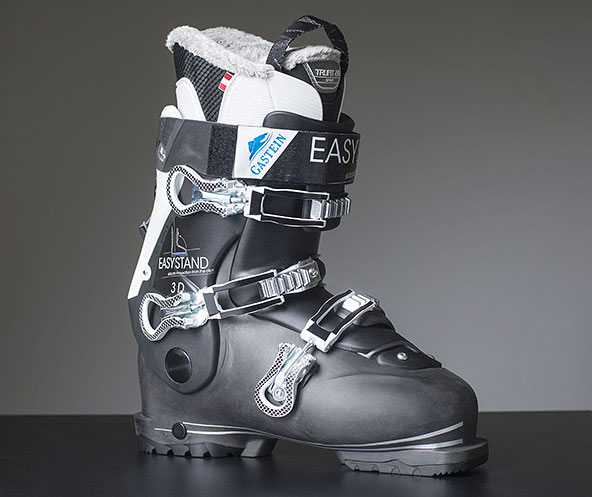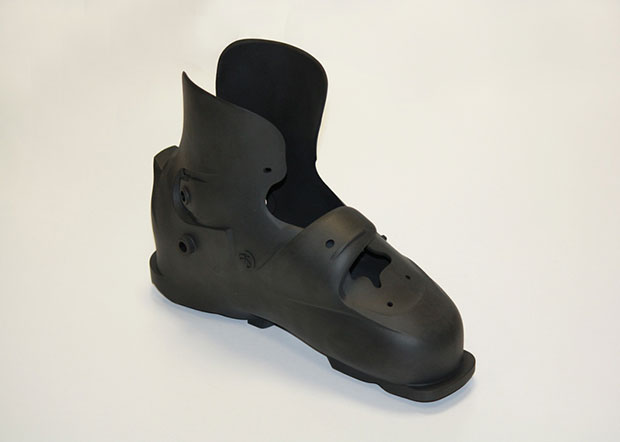3D Printing Takes to the Slopes

The completed EasyStand ski boot. Image courtesy of CRP Technology.
Latest News
February 17, 2015
The applications of 3D printing expand every day. While organizations are using it for prototyping and production of everything from medical devices and industrial jogs to more recreational applications — such as helping skiers hit the slopes.
German inventor Franz Egger has created the EasyStand ski boot, a product that uses 3D printing and carbon fiber-based materials called Windform. Egger has been a sporting goods dealer for more than 30 years and wanted a product that was ideal for the manufacturer, sporting goods dealer and skiers.
“We chose 3D printing because we believe in the future of 3D printing that will play an immense growing role in production. Nowadays, 3D printing is useful for the creation of prototypes as it can be cheaper and changes can be made much easier and in a short time,” wrote Egger in an email to Rapid Ready.
The choice to work with CRP Technology came from previous knowledge of the company. “CRP Technology and the Windform materials were brought to our knowledge by our partner Stefano Abram,” Egger stated. “He used to work for important ski boot manufacturers for a long time, and so he has lots of experience. CRP Technology is well known as one of the leading companies in the field of additive manufacturing, so he decided to contact them.”
One of the main challenges during the design process, according to Egger, was modifying and perfecting the STL files. To produce the boot, his team decided to partner directly with CRP Technology because they were looking “for a company that was in the position to follow our ideas.”
With 3D printing, Egger was able to make three different ski boot insoles. The design is such that the front is higher than the heel. With this design, the skier has more pressure for starting turns and tighter control while skiing.
Windform SP, according to CRP Technology, is a polyamide-based material reinforced with carbon fibers. It is a highly ductile material with top mechanical resistance, slightly lower than Windform XT 2.0, CRP Technology says. In addition, it is waterproof with sealing characteristics both to liquids and gas.
Because the material uses carbon fibers, it can be used with applications that have high stress fatigue without the risk of breaking, according to the company. Used with advanced laser sintering, it can create a variety of functional parts in the aerospace, medical and marine industries.
What makes the Windform material ideal for a ski boot design, the company states, is its ability to maintain its characteristics at low temperatures.
For future manufacturing plans, Egger says he will keep 3D printing in mind as soon as the technology is suitable for mass production.
Source: CRP Technology
Subscribe to our FREE magazine, FREE email newsletters or both!
Latest News
About the Author
Jess Lulka is a former associate editor for Digital Engineering. Contact her via [email protected].
Follow DE







